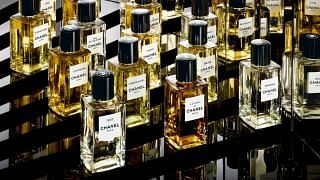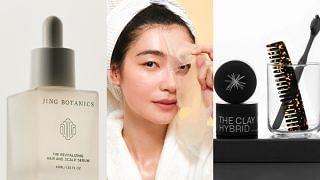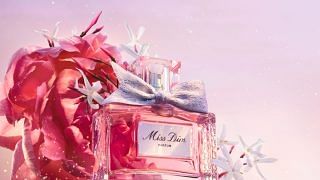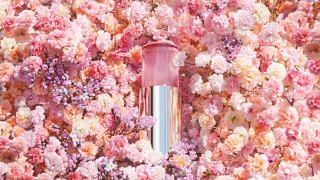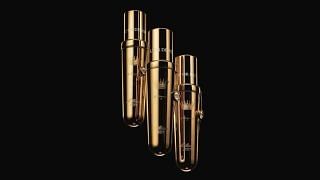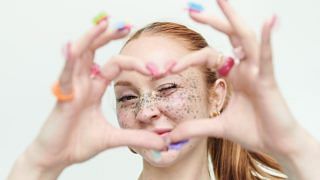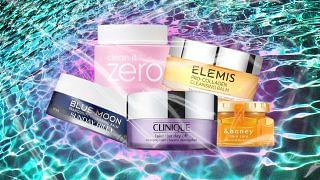From the introduction of multi-purpose products and “complicated” treatments you can now do at home, to how goods are marketed these days, the beauty industry is a sphere that constantly thrives on innovation.
It is also one that is growing massively. In Singapore, the beauty and personal care market is projected to generate a revenue of US$1.24 million (S$1.64 million) this year. Within this industry, there has been a surge in demand for organic and sustainable products.
As with any major industry, it is ripe for disruption too. It’s not surprising to see that technology is playing a big part in the way we consume beauty products. The experts we spoke to are excited about these changes – and you should be too.
Here’s a rundown of seven beauty trends we’ll see in the coming years.
AI AND CUSTOMISED SOLUTIONS
AI is not a new phenomenum in the beauty industry, but its advancements are making shopping for beauty products even more personalised. For instance, shoppers can access AI skin analysis tools in Sephora, as well as diagnostic apps developed by skincare brands, such as La Roche Posay’s Effaclar Spot Scan.
Dr Harvey Ho, founder of Skinscape Clinic, highlights the significant advancements in technology, noting that certain devices now offer 3D post-treatment previews prior to undergoing procedures, enabling patients to visualise the expected outcomes. He emphasises the widespread adoption of such technology in spas and clinics, asserting that it has significantly enhanced the quality of patient care.
“AI skin analysis can provide a more personalised skincare experience and boost confidence in decision making for both the provider and the patient when choosing what treatments to do, especially if they are costly treatments,” he elaborates.
AI-powered tools are also making their mark in haircare. Shawn Chia, salon director of Chez Vous: Private Space, has seen tools that analyse the scalp along with prescribed recommendations in South Korea.
Some hairdressers are using skin tone analysis tools to diagnose and recommend hair colour shades that best suit their customers.
“Such tools will begin to pick up and become more sophisticated as consumers have this perception that AI technology is seemingly more accurate and objective as opposed to human judgement and expertise. Also, these tools make the entire experience more professional,” he says.
Try: Panoramic AI skin analysis with HD 3D imaging at mtm labo. The machine collects millions of key facial points to build a 3D model and is able to identify specific skin concerns or conditions in each region so you get the most appropriate product or treatment recommendations.
MICRO MAKE-UP TRENDS ON TIKTOK
Dr Rachel Ho, medical director at La Clinic, recognises that 2023 saw many micro makeup trends – from food-inspired blueberry nails, to the “mob wife” or quiet luxury aesthetic.
“I don’t expect micro trends to fatigue in 2024 as content creators bank on them going viral for their content to be highly visible; and for brands to ride on these trends,” she says.
Hair and make-up artist Airin Lee doesn’t think TikTok-friendly micro make-up aesthetics like the “mob wife” style will be as strongly viral in Singapore as compared to other parts of the world just because the look feels too “heavy” for our current climate to be relatable.
While he hasn’t come across TikTok trends relating to make-up, Dr Harvey does have patients frequently visiting him with screenshots of recent TikTok trends and requesting for the same looks.
“It could be something like a pixie nose tip lift or a fox eye lift,” he explains. “A notable recent TikTok trend was the ‘Barbie Botox’ neck. After the recent Barbie movie, I saw many patients who requested botox injections into the neck muscles to give the appearance of a longer neck – even if this was not something they routinely do.”
THE INFLUENCE OF THE GEN-ALPHA CONSUMER
La Clinic’s Dr Rachel expects the growth of Gen Alpha consumers to shape consumer trends and the cosmetics industry in many ways, including marketing and product design.
“This generation has unprecedented access to online content and social media. Along with changing perceptions of beauty and growing awareness of skincare benefits, Gen Alpha is a new demographic that cosmetics companies are directing their attention to,” she explains.
She cites brands like Sol de Janeiro and Bubbles, which have colourful, visually attractive packaging to attract this young audience. And in American skincare brand Drunk Elephant, another favourite amongst Gen Alpha, issued a statement on its Instagram page saying, “Many of our products are designed for all skin, including kids and tweens.”
“I predict more brands will be courting the Gen Alpha crowd and allay the concerns of their parents – ‘clean’ skincare and makeup products as they are perceived to be safer on the skin, marketing of these products on social media as ‘safe’, and Gen Alpha influencers being tapped on,” says Dr Rachel.
However, Dr Harvey disagrees, as he thinks Gen Alpha consumers are too young to have a meaningful impact on current aesthetic trends. “But I do see more Millennial- and Gen Y parents being concerned about their Gen Alpha children’s appearance, and are willing to bring them for aesthetic treatments such as mole removal or laser treatments for acne,” he says.
Try: Sol de Janeiro’s Delicia Drench Body Butter is an ultra-rich formula that penetrates deep below the surface to lock in moisture and relieve extra dry skin, for up to 24 hours. Also, Drunk Elephant’s the Bora Barrier Repair Cream rebuilds and restores your skin barrier so you’ll have healthier, firmer, nourished skin.
‘SKINIFICATION’ OF HAIRCARE
Shawn of Chez Vous reveals that this is already happening, with the use of ingredients popularised by the skincare industry such as hyaluronic acid, ectoin, ceramides and peptides, which are currently dominating the haircare industry.
“By marketing them as skincare either directly or indirectly, it is easier for consumers to infer the benefits of such ingredients and how the product is expected to perform,” he says. “Many ingredients used in skincare are effective as well when it comes to haircare,” he adds.
Dr Harvey Ho is a fan of this trend as it acknowledges the interconnectedness of the scalp and hair health, as “all hair pathology arises from the scalp and good scalp health really is the key to healthy hair.”
“In my practice, I have adapted facial skin treatments for the scalp. For example, I combine microneedling (traditionally used to increase collagen in skin) with scalp application of exosomes (which are signalling molecules that cells use to talk to each other), and this has shown great results in improving hair growth,” he says.
Even though he agrees that some “classically skincare ingredients” in haircare products may be beneficial, he advises to approach them with caution as they are relatively new. “It would be best to seek advice from a hair care professional or doctor before using them,” he adds.
Try: The Elseve Hyaluron Moisture range from L’oreal Paris contains hyaluronic acid that brings dehydrated hair back to life. Additionally, Aromatica’s Rosemary Salt Scrub Shampoo is essential for Hair and scalp maintenance, with ingredients such as Andes Lake Salt particles and Rosemary Extract to exfoliate and cleanse.
HIGH-PERFORMING ALTERNATIVES TO SYNTHETIC INGREDIENTS
Our experts have mixed views about this trend and the main gripe is that there has been a lot of fear-mongering in recent years. Shawn reveals that “fear marketing” from clean beauty industries have successfully demonised many great synthetic ingredients like sulphates, parabens and silicones.
On the other hand, he says consumers are becoming smarter to realise that many of these clean beauty claims – such as natural ingredients are better than synthetic ingredients or how certain synthetic ingredients are harmful to human health – have to be taken with a grain of salt.
“How this trend will go is still too early to say. But, in the short term, yes, ‘high-performing’ alternatives will be marketed and explored more. Let’s just hope that consumers will become more aware about many of these claims moving forward,” he adds.
Shinji Yamasaki, founder of skincare brand Re:erth, says the brand believes in harnessing the best of both worlds – natural and synthetic – to create effective and safe skincare formulations.
“While there are indeed fantastic natural ingredients, it’s essential to recognise that there are also exceptional synthetic ingredients that offer unique benefits for the skin,” he says. “Fear mongering about synthetic ingredients is neither productive nor necessary; instead, we advocate for a scientific and balanced approach to skincare formulation.”
“From a technical perspective, replacing high-performing, synthetic raw materials with natural alternatives can present significant challenges. Natural ingredients often come with inherent instability and aesthetic limitations, which can affect the overall efficacy and sensory experience of the product,” he adds.
Shinji also notes that not all natural or organic ingredients are necessarily beneficial for the skin. Surprisingly, some natural ingredients can cause irritation or other adverse reactions, highlighting the importance of careful ingredient selection and formulation.
Sisley’s regional managing director of Asia Pacific, Nicolas Chesnier, mentions how the brand made a deliberate choice to use active ingredients from natural origins.
“We are a pioneer in that field, having specialised our labs in this new science 50 years ago,” he explains. “We do not use just a few actives in a formula but often more than 30. This complexity of the formula participates in the high level of results we manage to reach as the different actives work in synergy to deliver even higher results for each targeted action.”
“I expect this trend to continue, as ‘natural ingredients’ like heartleaf and mugwort continue to be popular,” says Dr Rachel. “Also, I am seeing cosmetic brands perform [more] research and development, and modify their formulations to improve the performance of their ‘natural ingredients’, such as Sulwhasoo’s newer product releases with ginseng and ginseng berries.”
Try: Kose Sekkisei Brightening Essence Lotion will enhance skin’s brightness and achieve a smooth complexion thanks to a new active ingredient –W-glycyrrhetinic acid stearyl ester, derived from licorice. Meanwhile, Cetaphil’s Pro Ad Derma Repair Cream contains a new active ingredient, Ad-Resyl, which enhances skin hydration and restores balance in the skin microbiome.
SUN PROTECTION WILL GET MORE SOPHISTICATED
There’s no longer a one-size-fits-all product when it comes to sun care. Airin gives the example of not just having the usual cream-based products anymore but also gel-like products that feel more like a moisturiser than a sun cream.
“What we can look forward to are products in stick form but more seamless and lightweight than before. In fact, we are now spoiled for choice with mists as well,” she adds.
Shinji has observed a notable shift towards more sophisticated sun protection products, with an emphasis on natural ingredients such as algae and herb derivatives. He says antioxidant-infused sunscreens have become increasingly prevalent in the market too.
These formulations help neutralise free radicals generated by UV radiation, providing added protection against sun damage and premature ageing. By combining sun protection with potent antioxidants, these products offer a comprehensive approach to skincare and sun care.
“We’ve also noticed the emergence of ‘funscreen’ options, such as sunblock patches, which have gained popularity on social media,” he reveals. “This trend reflects a growing interest in innovative formats of sunscreen that cater to different lifestyles and preferences. By offering a variety of sun protection options, including these novel formats, the industry is working towards making sun protection more accessible and enjoyable for consumers.
Dr Harvey mentions edible sunscreen, which is popular with his patients: “Edible sunscreen refers to an oral tablet with a compound called PLE (Polypodium Leucotomos Extract). PLE is a powerful antioxidant that, when ingested, reduces the harmful effects of UV damage on the skin. It provides a noticeable benefit on top of the usual application of topical sunscreens.”
And Dr Rachel thinks we can expect new UV filters that are more stable and offer a greater spectrum of UV protection (such as L’oreal UVMune 400), plus a greater diversity of sunscreen textures and finishes for different skin types.
“Some of the major Korean sunscreen manufacturers are working on improving the performance of their sunscreen, for example, in terms of water resistance and delivery systems,” she adds. “I also expect sunscreen to be incorporated into more products. Brands like Augustinus Bader are launching lipcare products with SPF this year.”
Try: UV rays can damage your skin in the day, so it needs to regenerate at night. Sisley’s Phyto-Blanc Collection gives your skin daytime protection and nighttime detoxification. Chanel’s Le Blanc La Base Legere is the make-up base that’s infused with hydration-promoting and brightening properties – and also offers SPF 40 / PA+++ sun protection.
SCIENCE OF EPIGENETICS
Dr Rachel thinks this cutting edge science is intriguing but still lacks robust, large clinical trials to assesses its effectiveness when used in skincare. Also, one of the barriers to epigenetic skincare products is the skin barrier which affects skincare absorption, as these epigenetic skincare products need to penetrate beyond the skin barrier to influence the DNA and cell communication.
“I believe that more brands will be investing in epigenetic research as it presents a innovative modality to delay ageing and influence wound healing,” she adds.
Professor Augustinus Bader, founder of Augustinus Bader, explains that, although we cannot change our genes, “there is a possibility to influence which genes are expressed.” He says that epigenetic science tells us that how we age depends not only on our genes but also on what we do with them. Lifestyle factors, such as what you eat, where you live, when you sleep, how you exercise, and even ageing – can eventually cause chemical modifications around the genes that will switch specific genes on or off over time. Therefore, we all have the means to course-correct.
“Our formulas help to do this and can be used at any age to support the body’s natural renewal process. It’s something that empowers your body and your skin to be healthier,” he reveals. “Our skincare technology moves in the field of epigenetics, working with the skin’s own intrinsic renewal processes. Derived from my research of the body’s healing processes, this combination of active ingredients is what makes up our proprietary TFC8, Trigger Factor Complex TFC technology. The complex is essentially a “toolbox’, providing the skin cells with everything they need to fix the things that go wrong, from improving elasticity to supporting natural hair growth.”
Lim Ker Han, managing director of est.lab, explains how the brand’s study of epigenetics has led to the discovery of a class of molecules in the body that help to regulate a part of our skin ageing genes. How these molecules work are similar to switches, with the ability to turn up or down an activity influenced by our diet, lifestyle and environment. The brand has developed epigenetics-based solutions, such as VitaLift A+ Skin Reboot Serum and Skin Reboot Cream, where regenerative plant stem cell technologies are employed to stimulate, regenerate and reboot the skin back to its youthful state.
“The key ingredients in these products were derived from our research of skin ageing via epigenetics phenomena to effectively reverse the signs of ageing, while re-establishing our genes’ function, and controlling and reducing the skin stressors due to our urban lifestyle. As you can imagine, epigenetic research will continue to be a key component of our R&D focus for us,” he says.
Try: Diorsnow Essence of Light Serum continues Dior’s formula of combining scientific expertise in epigenetics and floral science. It has been infusing its products for over 20 years with edelweiss, which is now a part of the Diorsnow brightening complex, D-NA Light Reboot Technology 2.0. This serum now has an even more high-performance formula that acts on the overall quality of skin. Estee Lauder’s Re-Nutriv Ultimate Diamond Collection is powered by black diamond truffle extract and youth-sustaining technology, to brighten and fortify skin.
This article first appeared in Her World








